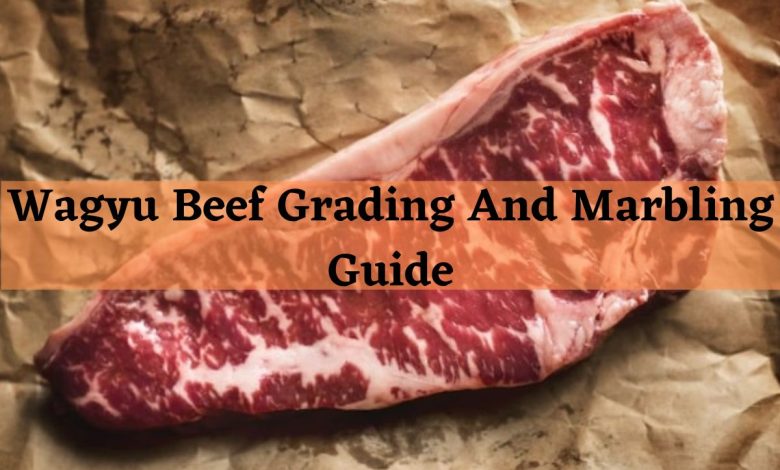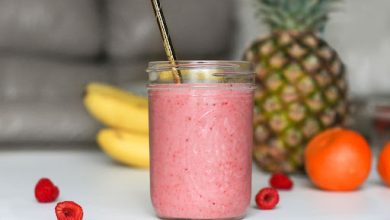Wagyu Beef Grading And Marbling Guide

The word Wagyu is a mixture of ‘Wa’ means ‘Japanese’ and ‘gyu’ means ‘cow’. If you are confused about wagyu beef grades, then it is alright, because most people have no idea about the grades of Japanese cows. You must have heard the terms Grading And Marbling, so in this guide, you will get all the information regarding these terms.
The demand for wagyu is increasing day by day and this is the reason that countries like Australia and America started breeding them as well. However, the taste, texture, and quality of meat differ due to changes in weather conditions, soil, grass, and others. Keep reading to find out how the grading and marbling wagyu beef is done!
Grading of Wagyu beef – How it is done?
The Wagyu beef grades differ slightly from country to country, but the quality is almost the same. When we talk about Wagyu beef, people assume that it would of exceptional quality, appearance, and flavor. To calculate the yield, the ratio of meat to the weight of the carcass is considered and then the wagyu beef grades are given either A, B, or C.
- Grade ‘A’ is the highest one with 72 percent or above.
- Grade ‘B’ is given when the yield is 69% and above.
- Grade ‘C’ is given to beef under 69% yield.
A5 is the highest grade of wagyu beef available on the market, and only full-blood Wagyu may receive an A5 rating. The JMGA (Japanese Meat Grading Association) issued the grading of Wagyu beef from 1(lowest) to 5(highest), The quality scores range from 1 to 12, and these numbers depend upon many factors including marbling, IMF%, meat color, size of ribeye area, rib eye shape, and others.
- A score of 1 is poor.
- A score of 2 is Below Average.
- A score between 3 to 4 is Average.
- A score between 5 to 7 is Good.
- The quality score between 8 to 12 is Excellent.
What is the Marbling of Wagyu beef?
The marbling of Wagyu beef refers to the fat (intramuscular fat) that is visible which is described as snow or flecked by the Japanese. Upon cooking marbling wagyu beef, we get a unique and juicy flavor that is really exceptional.
Marbling has a good impact on the eating quality of beef, making it tender, juicy, and flavorful. The visible fat found between the bundles of muscle fibers is referred to as marbling wagyu beef in the AUS-MEAT cattle quality grading system.
Factors depending on Wagyu beef grades:
As we stated above the wagyu beef grades are given depending on many factors, some of the most important ones are described in detail below:
Meat Color and Appearance:
The most critical criteria for grading Wagyu beef are its color and appearance. The meat’s color shouldn’t be excessively dark or bright; instead, the mid-tones are considered to be of higher quality. The quality of the fat and how soft it will be are also indicated by the glossiness of the fat, which also plays a role.
Marbling (Fat to lean ratio):
We have given detailed information about marbling wagyu beef above which is the most important thing to consider in grading. The ratio of fat to lean meat is thought to be a criterion for meat quality; the higher the fat content, the better the wagyu beef is considered.
Firmness along with Tenderness:
People want firmness and tenderness in their Wagyu meat. It also affects the grading because the meat needs to be just the right consistency to cook without falling apart. It shouldn’t be too firm or too tender.
Some other Grading Systems of Wagyu Beef:
We mentioned the Japanese Meat Grading Association system of Wagyu Beef above but there are other systems as well that are used in other countries, have a look at them below:
Australian Grading System (Wagyu Beef grades):
Just like the Japanese grading system, the score is given according to the quality of meat in the Australian system. The only difference is that the score ranges from 1 to 9, but other requirements, such as quality scores, are the same for grades 1 to 5. On the Australian grading scale, a Wagyu beef that receives an 8 or 9 is considered to be excellent.
USDA Grading System (Wagyu Beef grades):
The USDA Grading System depends on terms like Select, Choice, and Prime and wagyu beef falls into the category of Prime. Similar to previous standards, its meat quality hinges on things like marbling, low carcass maturity, and the best possible coloration and appearance. The USDA’s Prime classification corresponds to Grade 12 Kobe beef in the Japanese grading system.
Wrapping Up:
We hope you found this Wagyu beef grades and marbling guide useful, now that you are aware of the terms, you can easily select the best-grade meat for your family. We have also shared the different grading standards for a better understanding of Wagyu beef grades.
Share this information with your friends as well and comment below to share your thoughts about Wagyu beef with our audience.
Frequently Asked Questions:
What is the best grade of Wagyu beef?
A5 is considered the best grade of Wagyu beef due to its ideal tenderness, texture, color, yield, and marbling score. (‘A’ is the yield grade and ‘5’ is the meat quality grade).
What are the famous types of Wagyu?
Kobe beef, Matsusaka beef, and Yonezawa or Omi beef are the popular ones and are considered the best due to their high meat quality and other health benefits.




